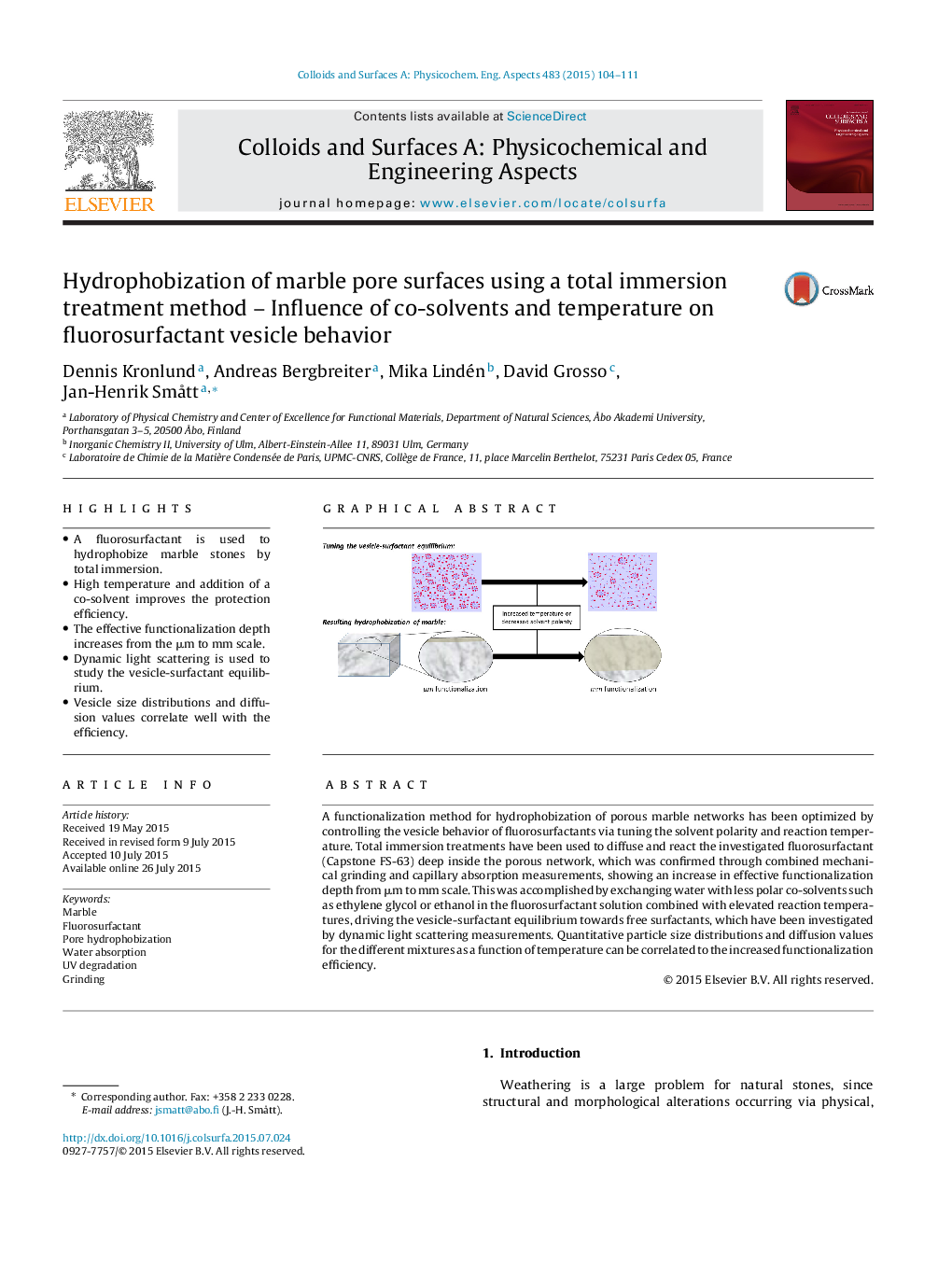| Article ID | Journal | Published Year | Pages | File Type |
|---|---|---|---|---|
| 591985 | Colloids and Surfaces A: Physicochemical and Engineering Aspects | 2015 | 8 Pages |
•A fluorosurfactant is used to hydrophobize marble stones by total immersion.•High temperature and addition of a co-solvent improves the protection efficiency.•The effective functionalization depth increases from the μm to mm scale.•Dynamic light scattering is used to study the vesicle-surfactant equilibrium.•Vesicle size distributions and diffusion values correlate well with the efficiency.
A functionalization method for hydrophobization of porous marble networks has been optimized by controlling the vesicle behavior of fluorosurfactants via tuning the solvent polarity and reaction temperature. Total immersion treatments have been used to diffuse and react the investigated fluorosurfactant (Capstone FS-63) deep inside the porous network, which was confirmed through combined mechanical grinding and capillary absorption measurements, showing an increase in effective functionalization depth from μm to mm scale. This was accomplished by exchanging water with less polar co-solvents such as ethylene glycol or ethanol in the fluorosurfactant solution combined with elevated reaction temperatures, driving the vesicle-surfactant equilibrium towards free surfactants, which have been investigated by dynamic light scattering measurements. Quantitative particle size distributions and diffusion values for the different mixtures as a function of temperature can be correlated to the increased functionalization efficiency.
Graphical abstractFigure optionsDownload full-size imageDownload as PowerPoint slide
